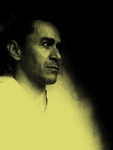
In 1907 Gustav Vigeland was commissioned to create a fountain for the Norwegian city of Kristiana with the initial intention of it being placed in front of the Parliament building in Eidsvolls Plass. The fountain became the starting point for a steadily growing sculpture park. As more and more ideas took shape, a lack of room in his studio in Hammersborg became apparent and in 1921 he and the Kristiana City Council reached an agreement.
Vigeland would donate all of his works to the city in exchange for a purpose built studio, which would also be used as a museum for his future works. In 1924 he moved into his new studio in the Frogner district of Oslo and dedicated the rest of his life to the completion of the sculptures in Frogner Park, later known as Vigeland Park. It features over 200 of his works.
Gustav Vigeland was born in Mandal in 1869. He was the son of Master-Carpenter Elesaeus Thorsen and his wife, Anna Aanensdatter, and was the second of five brothers. His youngest brother, Emanuel (1875-1948) was also a sculptor. Vigealnd’s debut came durint the State Art Exhibition of 1889 and over the next decade he made study tours to France, Germany, Italy and England. Vigeland soom established himself as Norway’s leading sculptor and in the early twentieth century completed a number of portraits and monuments of well-known Norwegians.
Gustav Vigeland died on 12th of March 1943 and in 1947 the Vigeland Museum was opened to the public. ~
amateur_photo_bore















